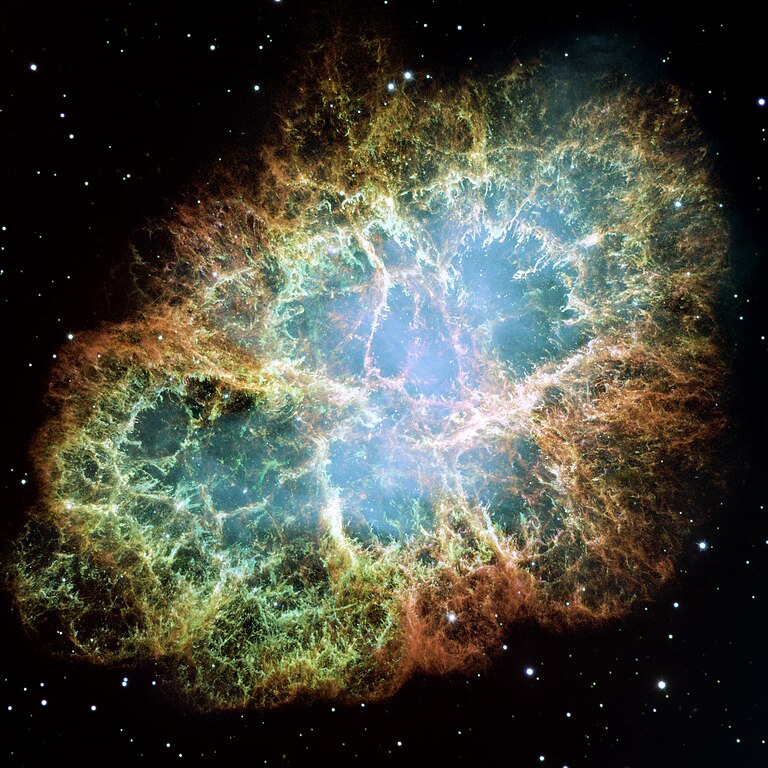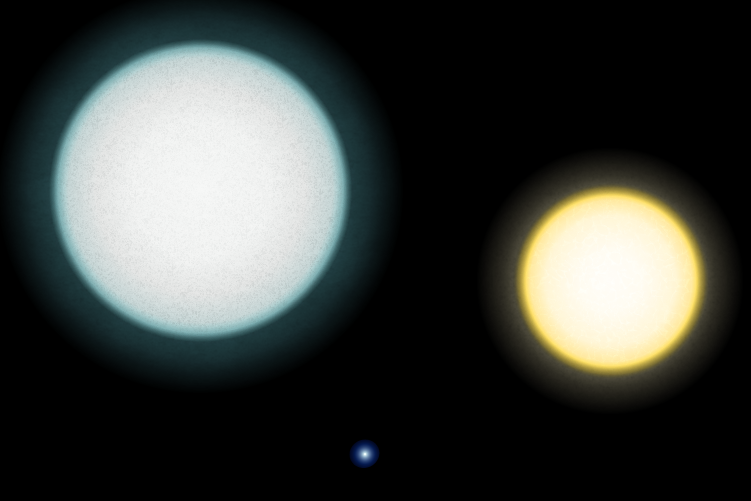 |
| Figure 18 The Crab Nebula created from the 1054 AD supernova (http://upload.wikimedia.org/wikipedia/commons/thumb/0/00/Crab_Nebula.jpg/768px-Crab_Nebula.jpg) |
In following my Principle 1, I need to address all of the observable features of the Solar System – so here is another important one. Scientists doing isotopic analysis of meteorites (outer space rocks that have fallen to Earth) found some interesting “stuff”. What they found was a certain radioactive isotope of the element aluminum that is commonly found only from the aftermath of a supernova. By using isotopic analysis of ratios of radioactive aluminum isotopes to non radioactive ones, scientists can determine the length of time since all of the aluminum was the radioactive kind. This is exactly the same process that carbon dating uses (but using aluminum instead of carbon). This information has led some scientists to believe that there was a supernova that occurred a bit after the time the Earth was formed (4.5 Gya).
Supernovas are one thing that you really don’t want to get too close to. These scientists theorize that this supernova was “close” to the Earth. How close? We don’t know, but close enough to cast these chunks of meteorites (with aluminum) to fall upon the Earth.
Let’s make an assumption here – that the supernova happened right here in our Solar System, and not from a nearby system. This is applying Occam’s Razor – it is simpler to believe that a supernova happened here instead of adding another star system to “the mix” (making the model more complex).
Conundrum 13: Nearby (survivable) supernova
Just how do you have a supernova in our Solar System without destroying everything?
Conundrum 14: Which star blew up?
It obviously wasn’t the Sun – so what, another star?
The Sun is here today – so it never supernova-ed. That means that there must have been another star in addition to the Sun in our Solar System 4.5 Gya (star number 2).
Stars the size of our Sun do not supernova. There are 2 types of supernovas and they start from either giant stars (type II) or white dwarf stars (type I). It seems pretty unlikely that the Sun and Solar System could survive a supernova – but if it could survive it would make more sense if it were a type I supernova. A type I supernova has much less mass to blast out than a giant star, and a type II supernova leaves a neutron star or black hole behind – and we don’t see one around here. The second star was probably a white dwarf (Let’s call this star Rabbit).
Proposal 5
There was a white dwarf star (Rabbit) in the Solar System and it supernovaed (around) 4.5 Gya.
 |
| Figure 19 A comparison between the white dwarf IK Pegasi B (center), its A-class companion IK Pegasi A (left) and the Sun (right). This white dwarf has a surface temperature of 35,500 K.(http://upload.wikimedia.org/wikipedia/commons/5/5d/Size_IK_Peg.png) |
Let’s explore the mechanics of a Sun/Rabbit Solar System i.e. before the supernova.
No comments:
Post a Comment